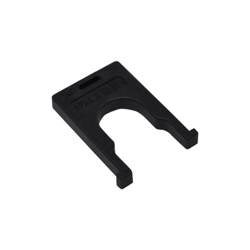You are using an out of date browser. It may not display this or other websites correctly.
You should upgrade or use an alternative browser.
You should upgrade or use an alternative browser.
Any Karcher specialists.
- Thread starter norsa
- Start date
Hi Nick, unfortunately it seems to be a thing with the Karcher pressure washers, particularly the domestic ones, there are quite a few repair tutorials on you tube which may help pinpoint the problem and a company called 'e spares' are quite good for spare parts. I must admit I gave up after owning a few of these over the years and bought a petrol powered version the pumps seem to be a lot more robust and longer lasting on these. sorry I can't help further.
regards Norm
regards Norm
wristpin
Member
- Messages
- 1,178
As has been said with the domestic Karchers you basically get what you pay for, a consumer item with a plastic pump which flexes with pressure changes and eventually splits. That said in the right situation they give quite good service. Best advice is to switch it off , turn the feed water off and pull the trigger to release internal pressure and when next using squeeze the trigger while turning the water on and then switch on - gives the pump as easier time as possible.
I've got an electric TW washer with a 3 piston metal pump which must be 15 years old and for the first ten was used every day for my business, now relegated to car washing and garden duties, and other that a recent new run capacitor for the motor hasn't missed a beat.
I've got an electric TW washer with a 3 piston metal pump which must be 15 years old and for the first ten was used every day for my business, now relegated to car washing and garden duties, and other that a recent new run capacitor for the motor hasn't missed a beat.
Karcher are a complete joke with their build quality, for the money you outlay to purchase them.
Very ordinary.
You may be lucky enough for the pressure switch to last at least 3 months. That is with dropping the pressure off (otherwise the hose blows off the gun, when left in the sun)
After 3 under warranty, I've given up. It's a 76 km trip one way to return them for a claim on the faulty machine.


Very ordinary.
You may be lucky enough for the pressure switch to last at least 3 months. That is with dropping the pressure off (otherwise the hose blows off the gun, when left in the sun)
After 3 under warranty, I've given up. It's a 76 km trip one way to return them for a claim on the faulty machine.



Domestic karchers are a joke, the industrial ones are a bit better and what they built their name on.
I had two of them split apart in the plastic valve area, and I suspect they retain a bit of water so freeze in storage causing the splits or weakening them too.
I gave up on them, and am now the owner of a nice diesel powered secondhand karcher hds500 hot washer which is rebuildable.
I had two of them split apart in the plastic valve area, and I suspect they retain a bit of water so freeze in storage causing the splits or weakening them too.
I gave up on them, and am now the owner of a nice diesel powered secondhand karcher hds500 hot washer which is rebuildable.
norsa
old school painter
- Messages
- 2,473
- Location
- Newbury UK
Well its where the stem of the detergent inlet (part of the pressure controller) goes into the switch gear. Its already filled the switch with water and taken the main fuse in the house (went down well with er indoors). by a long process of illumination, I have narrowed it down to the plastic pressure control plate with hairline as it only happens on the high pressure part and makes the machine pulse. For the sake of 26bar, I've ordered a new one and we'll see.


